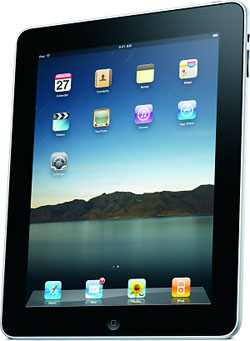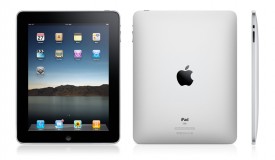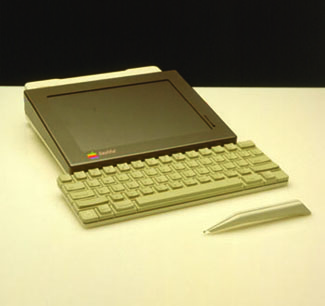Apple’s iPad – Changing the Way We Read Online
Apple launched their new electronic book reader this week, calling it the iPad. Thin, elegant and cool, it is everything that Apple fans have come to expect from the company. Technically a tablet computer, the iPad is positioned to fill the gap between the small screen of a smart phone and the full functionality of a laptop. It has the potential to greatly change the way we read and do our genealogy research online.

For someone who wants more screen real estate than a smart phone, the iPad is capable of running most (but not all) of the current 140,000 iPhone apps. This is perhaps the iPad’s greatest strength. The 9.7” color screen provides greater functionality than an iPhone or an iPod Touch. The iPad is also coupled with a fast, elegant interface and embedded video capability.

The true potential of the iPad, however, is as a dedicated e-book reader for those who enjoy the digital reading experience. This is where the iPad could really change the marketplace. In 2009, roughly 5 million e-readers were sold worldwide led by the Amazon Kindle and the Sony Reader. With the introduction of the iPad, it is estimated that some 10 million e-readers will be sold in 2010.
There are some downsides to the iPad. It will be offered in six different varieties ranging in price from US$500 to $830 depending on the amount of internal memory (16GB, 32GB and 64GB) and its wireless capability (WiFi or WiFi + 3G). This puts the iPad in the same price range as a netbook, even though it does not have all the capabilities of a netbook. The iPad lacks a camera, there is no USB connection, no external memory slot, no support for Adobe’s widely used Flash software (which is responsible for many online videos) and the proprietary processor of the iPad does not allow for multitasking. This means, for example, the iPad cannot play music in the background while you are reading a book on it. Obviously, Apple had to make some design compromises to get everything into such a thin package.
Existing e-readers such as the Amazon Kindle use what are known as an E-Ink display, which are generally thought to be easier on the eyes that the color LCD display used by the iPad. This is an important consideration, especially for an older audience looking at the screen for several hours at a time. However, the upside is that the iPad has an intuitive interface and rich color graphics.
Apple is generally viewed as one of the most innovative companies in the world. It's strenth, however, is not in developing radical new products but in improving on existing products by showing the world how to do it better. Several other firms have attempted to market tablet computers in the past with very limited success. Even Apple had a prototype tablet computer in the 1980s called Bashful that never saw the light of day (see photograph below).
The iPad is revolutionary because it attempts to marry the digital reading experience with the online web experience. It sits at the crossroads of three markets: telecom (the mobile phone), computers (the laptop) and media (books, magazines and newspapers) The iPad may very well change the way people read online.

The iPad will be available in the US in late March with rollouts in other countries following about three month’s later. Unless you are in a hurry to get the latest tech toy, it will probably pay to wait. Apple tends to drop prices and/or increase the amount of available memory in their gadgets over time.
| Tweet |
|

